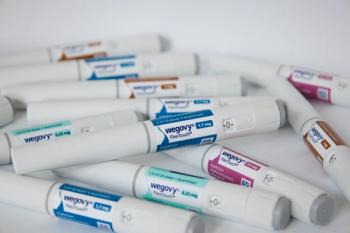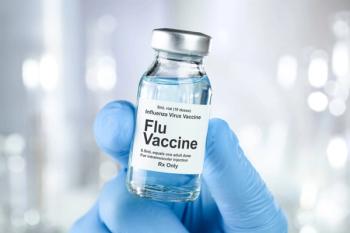
Young transgender adults had increased adherence to long-acting pre-exposure prophylaxis (PrEP) when adherence was confirmed via blood testing and incentives were delivered in cash.

Julia is an associate editor for The American Journal of Managed Care® (AJMC®) and joined AJMC® in 2022. She produces written and video content covering multiple disease states, and assists in the screening process for manuscripts submitted to AJMC®.
She has a BA in English language and literature from Rutgers University. You can connect with Julia on LinkedIn.

Young transgender adults had increased adherence to long-acting pre-exposure prophylaxis (PrEP) when adherence was confirmed via blood testing and incentives were delivered in cash.

Selected patients with a clinical response after therapy could benefit from salvage surgery in non–small cell lung cancer (NSCLC), with acceptable results for perioperative morbidity.

High stigma due to HIV was also associated with depression and drug use, making the reduction in stigma vital for improving the care of women with HIV.

A slight association between age-related macular degeneration (AMD) was also found with e-cigarettes.

The clearance rates for those coinfected with HIV and hepatitis C virus (HCV) are still higher than those with HCV alone.

Alina Salganicoff, PhD, discusses the immediate effects of the budget cuts to Medicaid as it pertains to women's health across the country.

Coverage of our peer-reviewed research and news reporting in the health care and mainstream press.

A new KFF poll found that 55% of adults use social media to find health information, with most of this group comprising young adults and those of Black and Hispanic descent.

A new report from the CDC shows that about 62% of children’s and teens’ diets are made up of ultra-processed foods.

Results confirm previous findings that nonarteritic anterior ischemic optic neuropathy (NAION) was more likely in those who used semaglutide, a glucagon-like peptide-1 receptor agonist (GLP-1 RA).

Bevacizumab combined with chemotherapy was not as effective in advanced driver gene-negative nonsquamous non–small cell lung cancer (NSCLC) compared with immune checkpoint inhibitors plus chemotherapy.

Patients with HIV had lower adherence to pre-exposure prophylaxis (PrEP) if they lived in areas with the lowest disadvantage.

Glucagon-like peptide-1 (GLP-1) inhibitors have proven effective in preventing cardiovascular events, leading to experts promoting their use outside of care for diabetes.

Posters presented at the ASPC 2025 Congress on Cardiac Prevention showed the benefit of participating in cardiac rehabilitation for a variety of cardiac issues.

A lively debate on the pros and cons of using hormone therapy in women to prevent cardiovascular events had attendees engaged throughout.

Studies found that glucagon-like peptide-1 (GLP-1) receptor agonists were valuable tools in improving outcomes and survival in those with coronary plaque and after ST-elevation myocardial infarction.

Language models and wearable devices are just 2 means of improving the practice of preventive cardiology.

Experts provided insights into how past cohort studies have helped to shape preventive medicine for more than 50 years.

With inflammation being the cause of dry eye in many cases, future treatment will likely target this aspect of dry eye.

Quality of life in people living with HIV was lower in those who had weight gain from adherence to antiretroviral therapy.

The American Society for Preventive Cardiology (ASPC) Congress on Cardiovascular Disease Prevention features multiple sessions on different methods of treating and preventing cardiovascular disease, including through the use of artificial intelligence (AI) and glucagon-like peptide-1 (GLP-1) receptor agonists.

Making sure that glands around the eyes are not blocked by poor hygiene is a vital step in mitigating symptoms of dry eye.

At the 6-month anniversary of the inauguration in January, The American Journal of Managed Care® looks back at the changes made by the Trump administration that could have lasting effects in health care.

Coverage of our peer-reviewed research and news reporting in the health care and mainstream press.

Mother-to-child transmission often led to pretreatment drug resistance and acquired drug resistance in children living with HIV.

Thimerosal, a mercury-based preservative, has been incorrectly linked to the development of autism by antivaccine groups.

The potential of health care technology has been disconnected from patients, making those innovations barriers rather than means of improving access and communication.

The Supreme Court decision in Medina v Planned Parenthood South Atlantic and the subsequent passing of the budget bill leave Planned Parenthood clinics and their patients in a precarious spot, says Danika Severino Wynn, CNM.

A new study shows low rates of pre-exposure prophylaxis (PrEP) prescribing to sexual and gender minority individuals living in North Carolina, indicating barriers like stigma and a misperception of risk as reasons for not using PrEP.

Lifestyle changes like drinking a lot of water and limiting screen time can help to alleviate symptoms of dry eye even outside of eye drops, says Karen Fernandez, MD.

259 Prospect Plains Rd, Bldg H
Cranbury, NJ 08512
© 2025 MJH Life Sciences®
All rights reserved.
